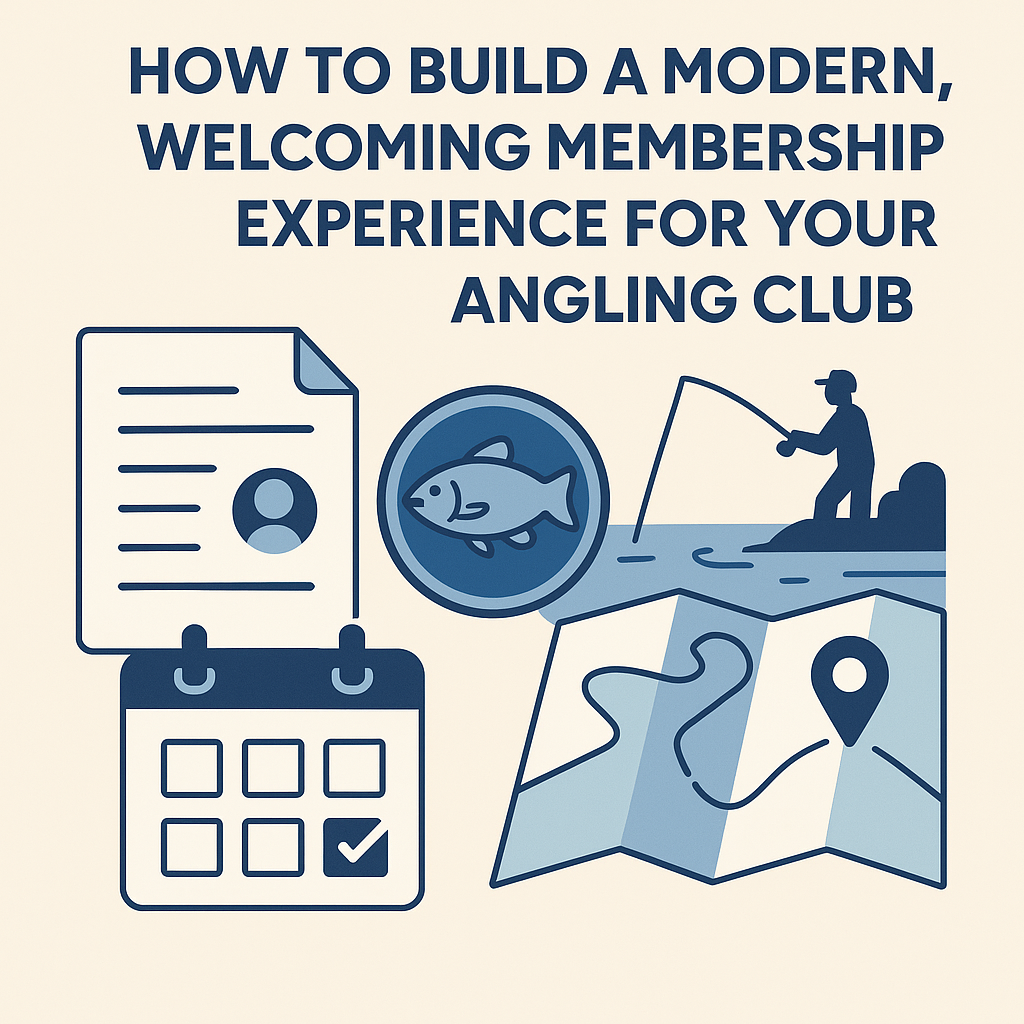Running an angling club used to be fairly straightforward: collect the subs, run a few matches, send out the odd email, and hope people stick around. Today it’s a very different world. Members expect smoother communication, easier sign-ups, clearer information, and a club that feels organised and welcoming. The good news is that none of this needs to be complicated. With a little structure, and a bit of help from digital tools like Clubnest, you can create a membership experience that people genuinely enjoy.
Understanding what people actually want
Most people don’t join a club just because of the fishing. They join for the sense of belonging — the feeling that they’re part of something. They want to know they’re welcome, that things are well-run, and that they’ll be kept in the loop. New parents, especially those bringing juniors, want reassurance that their child will be safe, supported, and treated kindly. And everyone appreciates clear information: what they get for their membership, how things work, and what’s coming up next.
When you talk about membership on your website or social media, try to think in those terms. Not as a list of features, but as a small story: “If you join our club, here’s how we look after you.”
Making joining effortless
The moment people decide to join, everything should feel simple. A clean online form, clear wording, straightforward payment, and no back-and-forth emails unless absolutely necessary. After they submit the form, they should immediately receive a friendly welcome message — ideally with a short thank-you note, a few helpful links, and a gentle introduction to the club. Something that makes them feel like you noticed, and that you genuinely care that they joined.
A digital welcome pack works extremely well. This might include your club handbook, venue details, behaviour expectations, and contact information for the committee or coaches. It saves you time, and it gives new members the confidence that they joined the right place.
Helping new members settle in
Once a new member joins, they go through a period of adjustment where they’re still figuring out how things work. This is where most clubs accidentally lose people. A quick follow-up within the first week makes a huge difference. Even something as simple as:
“Glad to have you. If you ever want someone to meet you at the fishery for your first visit, just let us know.”
Small gestures like that make people feel valued.
For juniors, this is even more important. Parents appreciate clear arrangements: where to meet, what time sessions finish, what equipment to bring, and what the safeguarding process looks like. If your club has a “buddy” system or volunteer who supports new families in the early weeks, it will massively improve confidence and retention.
Keeping members involved throughout the year
Retention isn’t about discounts or hard selling. It’s about keeping people connected. A club that communicates regularly — even once a month — naturally feels active and alive. Share match results, interesting catches, coaching updates, and what’s coming up next. Highlight your volunteers and celebrate your juniors.
People renew their membership when they feel part of a story that’s still happening.
A good rule of thumb: members should never have to wonder whether the club is still active. If they regularly see activity, they’ll stay engaged without you having to chase them.
Handling renewals without the headache
When renewal time comes around, it should feel natural, not nagging. A reminder a month before expiry works well, followed by a friendly nudge closer to the date. Automated reminders through Clubnest save a huge amount of admin and reduce the awkwardness of chasing late renewals.
Most members aren’t avoiding paying — they simply forget. A short, polite reminder often solves it instantly.
If someone chooses not to renew, it’s always worth understanding why. Sometimes the feedback is small and fixable: confusion about dates, difficulty attending sessions, or simply feeling unsure what they get from the membership. Asking the question opens a door for improvement.
Looking after your juniors
Junior membership is the heartbeat of most clubs, and parents appreciate clarity more than anything else. Having clear safeguarding information, photo consent options, and easy communication with coaches builds trust very quickly.
Juniors thrive when there’s structure: starter sessions, fun matches, skills weeks, awards, certificates. They want to feel like they’re progressing. When clubs recognise their achievements — even small ones — juniors stay enthusiastic and the parents stay loyal.
Telling your story and growing naturally
Every club has its own identity, its own character. The more you show this online, the easier it is for new members to picture themselves joining. Photos from your waters, stories about members, coaching highlights, small wins — these are what draw people in. You don’t need big marketing tactics. Just consistency, authenticity, and a welcoming tone.
A good website, clear membership information, and easy online signup do most of the heavy lifting for you. Social media adds personality on top.
Reviewing and improving each season
At the end of each year, take a moment to look back. Which events were popular? Did juniors grow in confidence? Did members attend regularly? Was communication clear?
If something didn’t work, you learn from it. If something went well, you do more of it.
A club doesn’t need perfection — it just needs a steady rhythm of small improvements.
Final thoughts
A successful angling club is built on relationships, not admin. When people feel welcomed, informed, and part of something, they stay. When you reduce the barriers to joining and make communication simple, your club naturally grows.

